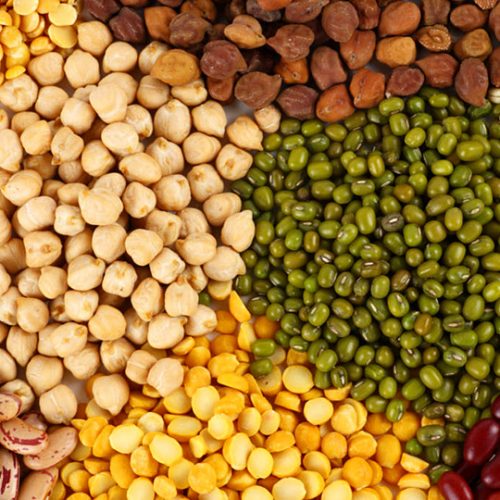- Home
- Pulses
Pulses
Pulses are the edible seeds of plants in the legume family. Pulses grow in pods and come in a variety of shapes, sizes and colors. The United Nations Food and Agriculture Organization (FAO) recognizes 11 types of pulses: dry beans, dry broad beans, dry peas, chickpeas, cow peas, pigeon peas, lentils, Bambara beans, vetches, lupins and pulses nes


The Fabaceae or Leguminosae (commonly called the legume, pea, or bean) family is that the third largest family of flowering plants, consisting of over 20,000 species. [1] Legumes are a nutritious staple of diets round the world. they’re a cheap source of protein, vitamins, complex carbohydrates, and fiber.
Although used interchangeably, the terms “legumes,” “pulses,” and “beans” have distinct meanings. A legume refers to any plant from the Fabaceae family that will include its leaves, stems, and pods. A pulse is that the seed from a legume plant. Pulses include beans, lentils, and peas. for instance, a pod could be a legume, but the pea inside the pod is that the pulse. the complete legume plant is usually utilized in agricultural applications (as cover crops or in livestock feed or fertilizers), while the seeds or pulses are what typically find yourself on our dinner plates. Beans in their various forms (kidney, black, pinto, navy, chickpeas, etc.) are only one variety of pulse.
Legumes are emphasized by the U.S. Dietary Guidelines (about 3 cups a week) and therefore the DASH Eating Plan of the National Heart, Lung, and Blood Institute (4-5 half-cup servings a week). [2] The Food and Agriculture Organization (FAO) of the United Nations declared the International Year of Pulses in 2016, that specialize in the contribution of pulses in food production and nutritional diversity to assist eradicate hunger and malnutrition.
